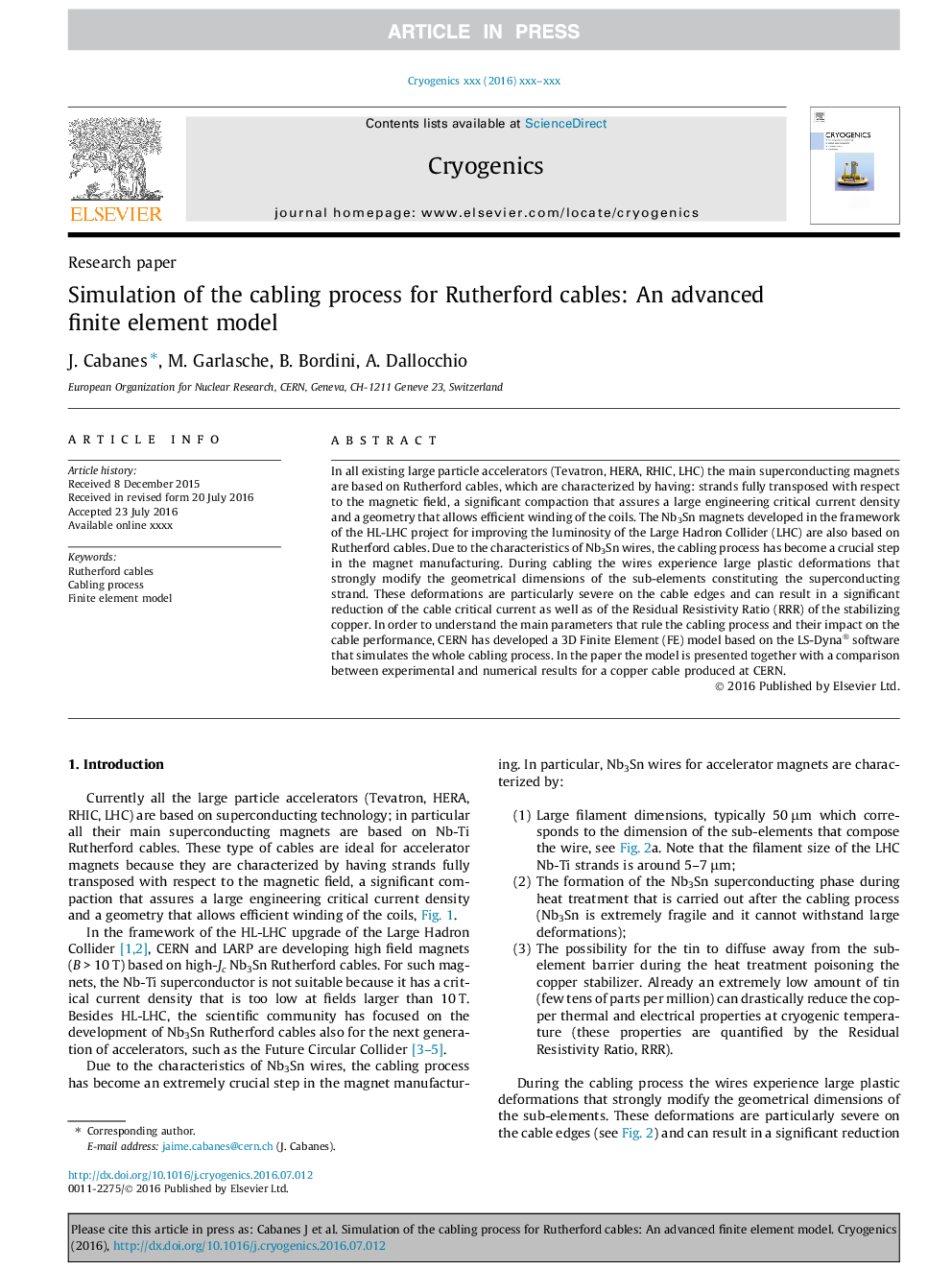| کد مقاله | کد نشریه | سال انتشار | مقاله انگلیسی | نسخه تمام متن |
|---|---|---|---|---|
| 5444187 | 1511033 | 2016 | 13 صفحه PDF | دانلود رایگان |
عنوان انگلیسی مقاله ISI
Simulation of the cabling process for Rutherford cables: An advanced finite element model
دانلود مقاله + سفارش ترجمه
دانلود مقاله ISI انگلیسی
رایگان برای ایرانیان
موضوعات مرتبط
مهندسی و علوم پایه
مهندسی مواد
مواد الکترونیکی، نوری و مغناطیسی
پیش نمایش صفحه اول مقاله

چکیده انگلیسی
In all existing large particle accelerators (Tevatron, HERA, RHIC, LHC) the main superconducting magnets are based on Rutherford cables, which are characterized by having: strands fully transposed with respect to the magnetic field, a significant compaction that assures a large engineering critical current density and a geometry that allows efficient winding of the coils. The Nb3Sn magnets developed in the framework of the HL-LHC project for improving the luminosity of the Large Hadron Collider (LHC) are also based on Rutherford cables. Due to the characteristics of Nb3Sn wires, the cabling process has become a crucial step in the magnet manufacturing. During cabling the wires experience large plastic deformations that strongly modify the geometrical dimensions of the sub-elements constituting the superconducting strand. These deformations are particularly severe on the cable edges and can result in a significant reduction of the cable critical current as well as of the Residual Resistivity Ratio (RRR) of the stabilizing copper. In order to understand the main parameters that rule the cabling process and their impact on the cable performance, CERN has developed a 3D Finite Element (FE) model based on the LS-Dyna® software that simulates the whole cabling process. In the paper the model is presented together with a comparison between experimental and numerical results for a copper cable produced at CERN.
ناشر
Database: Elsevier - ScienceDirect (ساینس دایرکت)
Journal: Cryogenics - Volume 80, Part 3, December 2016, Pages 333-345
Journal: Cryogenics - Volume 80, Part 3, December 2016, Pages 333-345
نویسندگان
J. Cabanes, M. Garlasche, B. Bordini, A. Dallocchio,